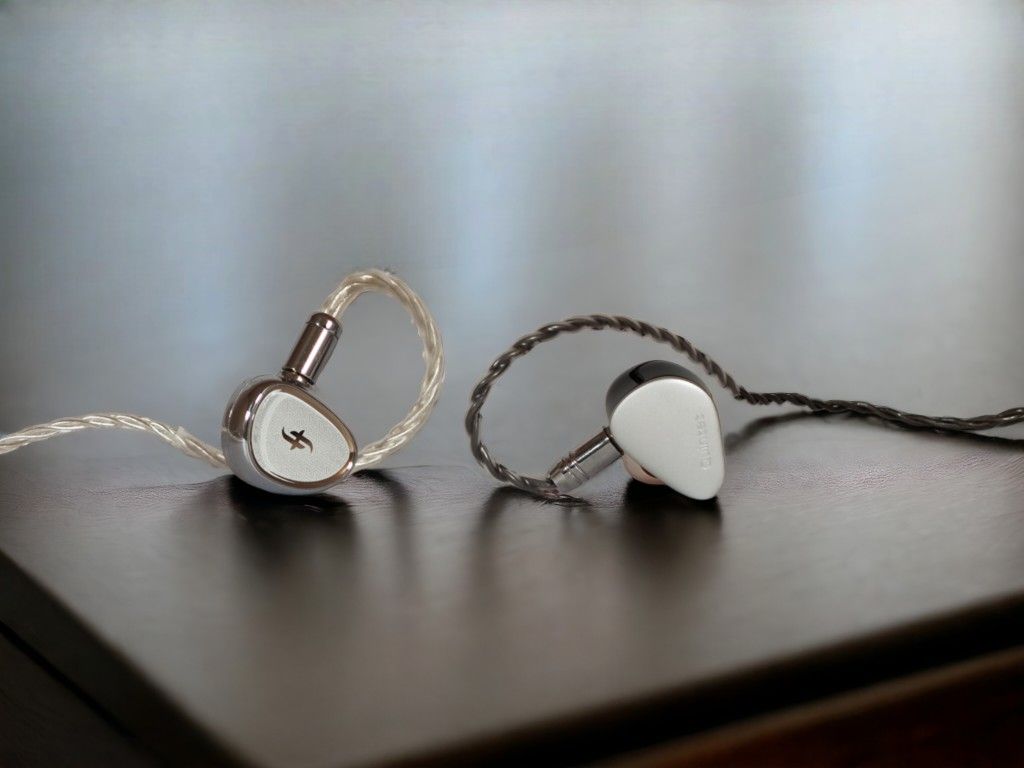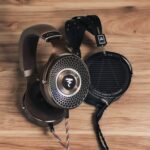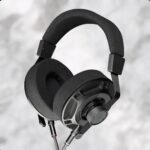Two capable in-ear monitors, which despite using very different technologies, have much in common.
The EA2000 is Simgot’s current flagship. It is a 12 mm single dynamic driver in-ear monitor with a semi-closed construction utilizing a passive radiator along with the driver. A passive radiator is a diaphragm with no coil or magnet that passively responds to the air pressure inside the chamber, which fluctuates with the main driver. The EA2000 is priced at 319 USD at the time of writing.
Kiwi Ears’ Quintet takes a different approach. It has 5 drivers per side, with 4 different types of drivers: one dynamic driver, two balanced armature drivers, one planar magnetic driver, and one piezoelectric bone conductor. The Quintet is currently priced at 219 USD, a significant 30% less than the EA2000.
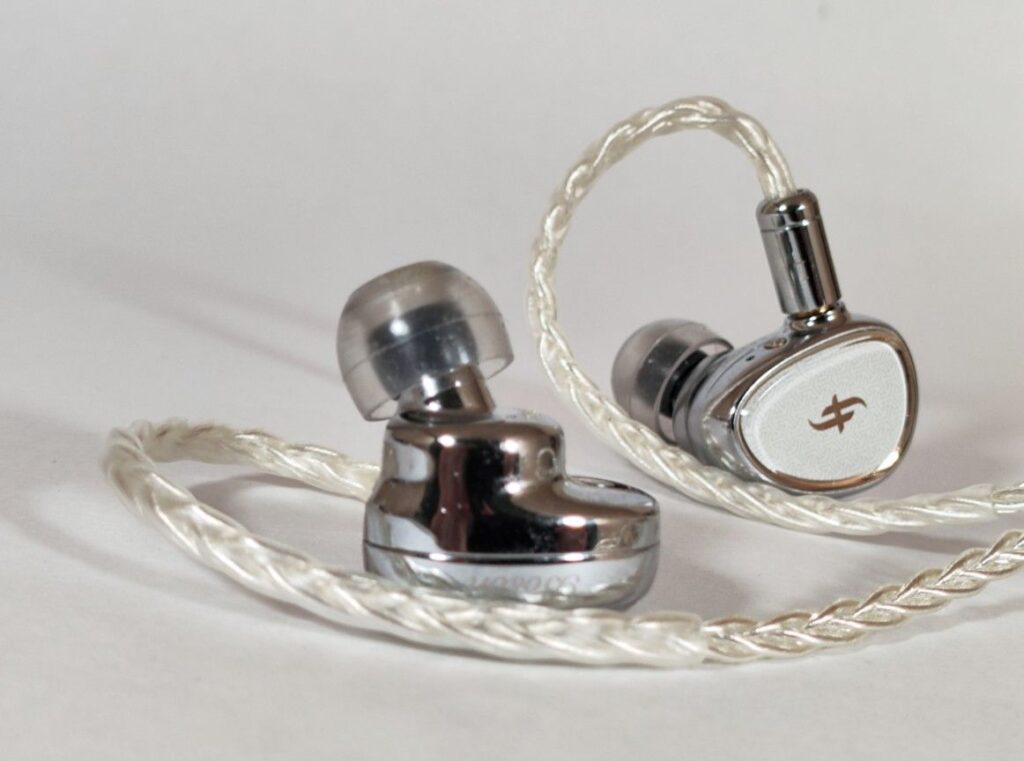
SIMGOT EA2000 SPECIFICATIONS
- 12mm Dynamic Driver (DD)
- 6 mm Passive Radiator (PR)
- Dual Magnetic Circuit & Dual Cavity Structure Dynamic Driver
- 1.9 Tesla Magnetic Flux.
- Impedance: 23 Ω
- Sensitivity: 114 dB
- Effective frequency response range: 20 Hz–20 kHz
- Detachable Cable: 120 cm Silver-Plated OFC Litz Cable 8 core, 152 strands
- Earphone Connectors: MMCX
- Cable termination: 3.5mm and 4.4
- Replaceable tuning module plugs are built into the exchangeable cable connectors. There are two tuning options for 3.5mm jacks, but only one for 4.4mm jacks.
Check the current price here:
- Linsoul: Simgot EA2000
- Amazon: Simgot EA2000
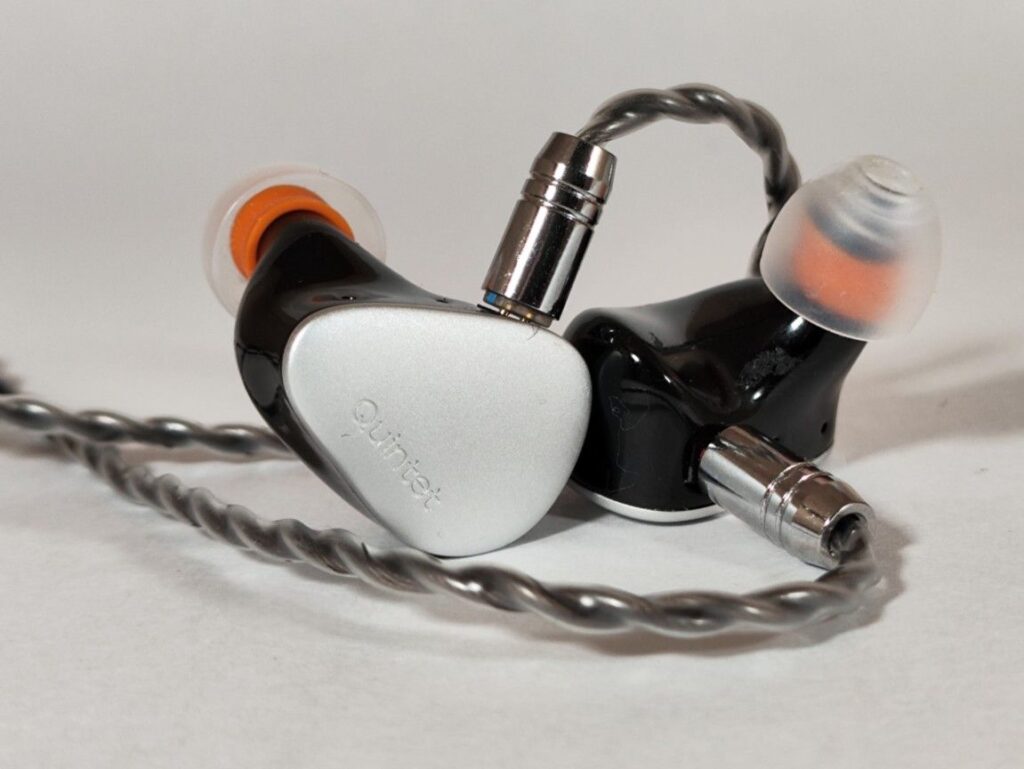
KIWI EARS QUINTET SPECIFICATIONS
- Drivers: 1 Diamond-Like Carbon (DLC) dynamic driver, 2 balanced armature (BA) drivers, 1 planar magnetic driver, and 1 piezoelectric (PZT) bone conductor
- Impedance 32 Ohms
- Sensitivity: 106 dB
- Included cable: 1.2 m Detachable Silver-Plated OFC Cable
- Cable plug type amp: 3.5mm
- Cable plug IEM: Detachable 0.78mm 2 Pin
Check the current price here:
- Linsoul: Kiwi Quintet
- Amazon: Kiwi Quintet
BUILD, DESIGN AND COMFORT
When it comes to build and design, the most immediate difference is the heavier build and somewhat larger size of the EA2000. The large 12 mm driver is enclosed by a metal housing with a decorative faceplate. It is relatively comfortable to wear, but I would not have it as my first choice going to the gym. An interesting feature is that the EA2000 comes with a replaceable tuning adapter built into the 3.5mm jack, which if wanted can make the sound warmer and smoother.
The Quintet does not come with any tuning options, except that you, of course, can change the tips. It is slightly smaller than the EA2000, and significantly lighter. The 5 drivers of the Quintet are fitted into a surprisingly small housing. It’s made of a polymer material with a metal faceplate. It is very light and fits very well in the ear.
Both IEMs come with detachable cables. The EA2000 uses MMCX connectors while the Quintet uses 2-pin 0.78 mm plugs.
With regards to build quality, cable quality, supplied tips and storage box, the EA2000 is better; however it is also significantly more expensive.
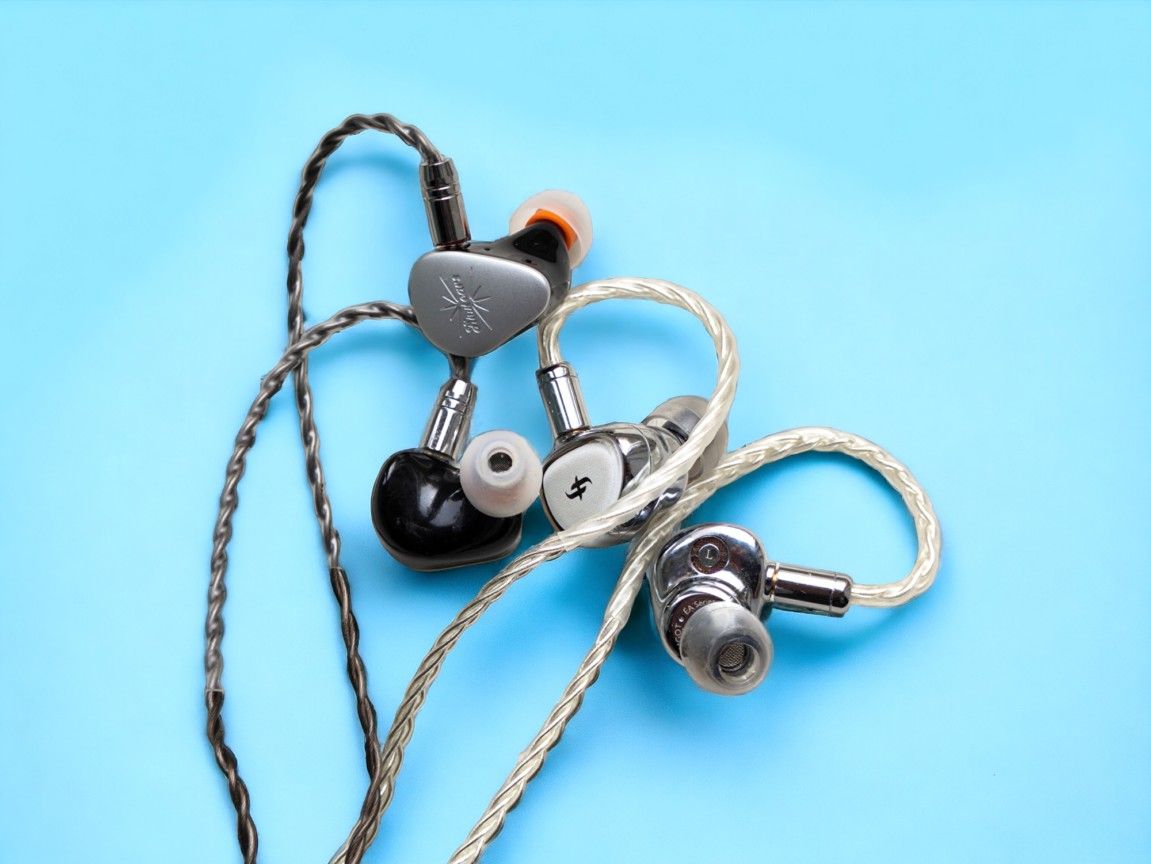
LISTENING COMPARISONS
Associated equipment: Topping A90 amplifier with the RME ADI-2 DAC FS as a source.
Maple Noise by Greene Serene
This is a fantastically dynamic-sounding and explosive track by a very entertaining jazz quartet. The EA2000 is very dynamic and detailed, with great spaciousness. Moving over to the Kiwi Ears Quintet, things get a little bit flatter and have a less dynamic sound with a dryer tonality. It is still good, but I definitely prefer the EA2000.
Keep Distance by Peter af Uggla
The Quintet sounds great, with a balanced, spacious sound and good detail. It’s quite smooth and enveloping.
Moving over to the EA2000, there is, however, an immediate improvement in clarity and dynamics. There is more detail, and subtleties are more pronounced. There’s more black space between the instruments and better imaging.
Sunrise by Norah Jones
The EA2000 again is very spacious and has an extremely dynamic sound, both in terms of macrodynamics and microdynamics. The tonality is relatively warm and crisp at the same time. The vocals are beautiful.
The Quintet also sounds good with great vocals, but it is less dynamic. The space between instruments is not as black, and there is less dynamic contrast. The tuning is otherwise relatively close to the EA2000.
Midnight City by M83
For some reason, this sounds better with the Quintet. It’s less busy sounding, the music feels less crowded. The detailed nature of the EA2000 might just be too much here. The Quintet is smoother, there’s a bit more bass, and it’s definitely more enjoyable.
Escape Route by Boris Blank
As with the previous track, the EA2000 sounds a lot more crowded, while the Quintet is smoother. There is a trade-off between the more dynamic and articulated presentation of the EA2000 and the less detailed, but smoother and, to me at least, more enjoyable presentation of the Quintet.
Almost Like the Blues by Leonard Cohen
A great presentation from the EA2000. Lots of space and details with a well-balanced tonality. The Quintet has a relatively similar sound signature, with a bit less bass here. It’s also not as articulate, resulting in a slightly smoother, very pleasant sound. The EA2000 certainly is better in the realm of technical performance, but the Quintet is also stunning and has a more relaxed way of presenting the music.
Black Crow by Cassandra Wilson
As with the above, the EA2000 has better detail and dynamics, yet the Quintet has an appeal, a comparative advantage, with the smoother presentation.
Young Vivaldi RV813 III by Ensemble Modo Antiquo
Starting with the Quintet, I think this sounds amazing. The strings have lots of texture and attack while at the same time sounding relatively smooth in a coherent and complete presentation. It is very enjoyable.
Moving over to the EA2000, I find that it sounds even more natural, with finer nuances and better dynamics. Some of the texture and attack the strings had with the Quintet are lost, though, so it’s a trade-off. The EA2000 is, however, the most neutral, natural, and technically better sounding of the two.
Summer 3 – Vivaldi Recomposed by Max Richter
Again, the EA2000 has a more natural and organic timbre, more fine detail, and better instrument separation, but again, there’s something compelling about the Quintet’s smoother rendering.
Jambi by Tool
The Quintet sounds great, but the EA2000 has a more organic sound with better separation and dynamics. However, the Quintet again is a bit smoother, which has its advantages with aggressive music like this.
Merciful by Nils Petter Molvær
The Quintet has a thicker and warmer presentation of the female vocals, yet it is also slightly dryer. However, they sound quite similar sounding with this piece.
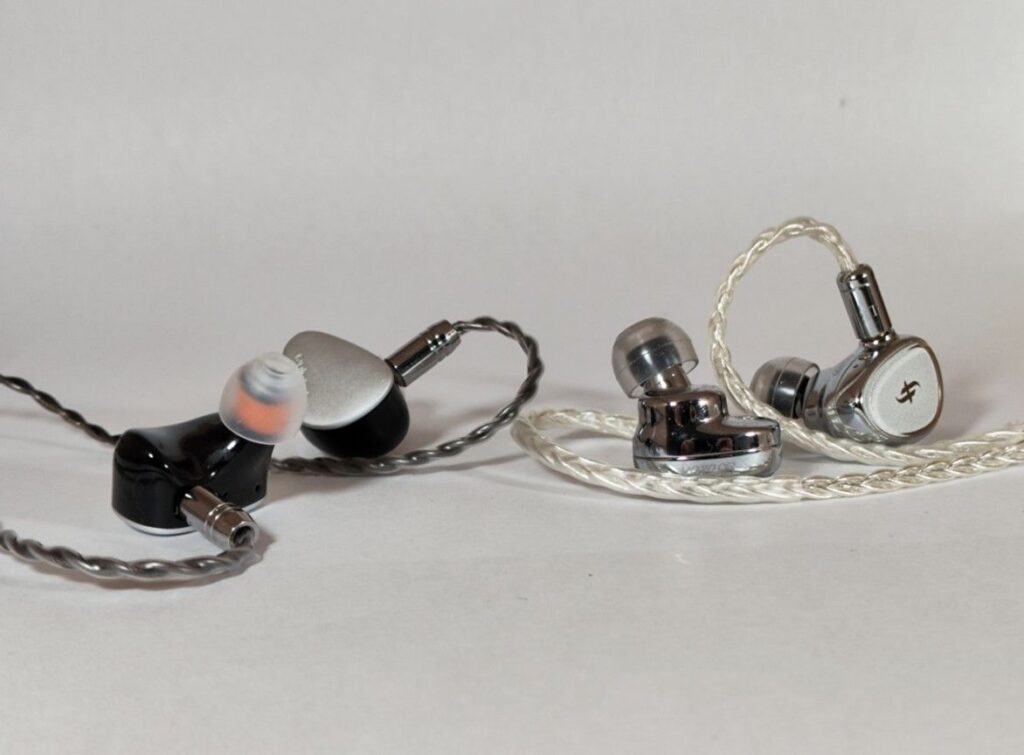
WRAPPING IT UP
Sound Signature
In terms of perceived frequency response, they are quite similar. The EA2000 has a bit more energetic highs, otherwise variations are relatively minor.
Treble
The EA2000 has more treble quantity. It is also cleaner and clearer. I generally find it to have a more natural sounding timbre.
Midrange
The Quintet is a bit thicker-sounding, with more perceived warmth, although a bit dryer. I find the EA2000 to sound more natural and organic. It also offers more detail.
Bass
They have relatively similar bass quantity. The EA2000 has a warmer, rounder bass that still feels well defined and detailed. The Quintet has great bass too, but it’s a bit drier and less organic-sounding.
Soundstage and Imaging
The soundstage is quite open and wide with both earphones. When it comes to imaging, the EA2000 is more precise and has more space between the instruments, as well as better layering. However, the smoother, less defined imaging of the Quintet can sometimes be an advantage, depending on the track.
Dynamics, Detail, and Timbre
The EA2000 and the Quintet are both highly detailed earphones. However, I do find the EA2000 to be more detailed across the board, especially in the midrange and the treble. I also find generally it to have a more natural timbre. In terms of dynamics, both are good, but the EA2000 is superior both in macrodynamics and microdynamics; there is better articulation and dynamic contrast.
CONCLUSION
The Simgot EA2000 and the Kiwi Ears Quintet are great IEMs with much in common. They have a similar sound signature and soundstage. However, in direct comparison, the EA2000 consistently exhibits better dynamics, detailv retrieval, and imaging, as well as offering a more natural sounding tonality with a beautiful timbre. Its treble is notably clean and clear.
However, the Kiwi Ears Quintet delivers a smoother and more relaxed presentation, which with some music can be very beneficial and preferable.
Considering the price difference I find it easy to recommend them both.
Buy Simgot EA2000 here
- Linsoul: Simgot EA2000
- Amazon: Simgot EA2000
Buy Kiwi Ears Quintet here
- Linsoul: Kiwi Quintet
- Amazon: Kiwi Quintet
Any purchase you make on Amazon or Linsoul with any of our affiliate links will give us a small provision at no cost to you.
We only get a provision for items that are not returned, so there’s no incentive for us to recommend something that’s not good.
Linsoul : Headphones, Earbuds, Wireless Earbuds, Desktop DAC/AMP, Portable DAC/AMP, Digital Audio Players,
Amazon: Headphones, IEMs, Headphone Amplifiers, Home Audio or Anything else.
.
If you enjoyed this article or other content on The Headphoneer, you might consider leaving a small donation to keep this website up and running. No donation is too small. Thanks for supporting us!
If you like our work please follow us on Instagram, Facebook and Twitter , it will help us grow. Sharing is caring 🙂


